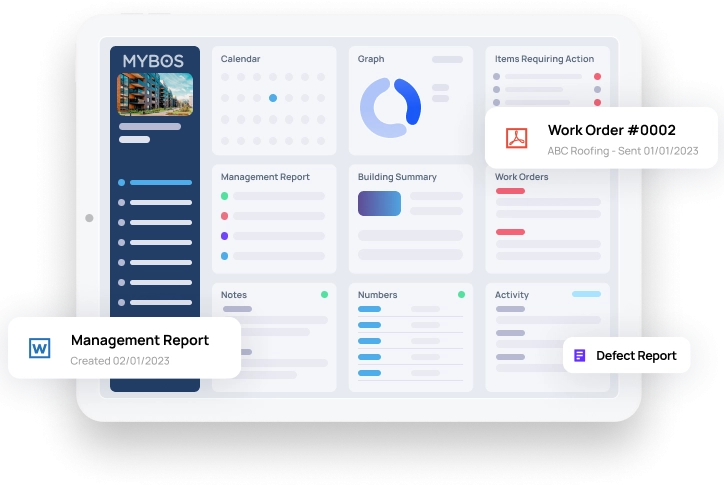
Top Sustainability Metrics Building Managers Should Be Tracking in 2025
Sustainability in 2025 isn’t a buzzword—it’s a benchmark. As building managers navigate tightening emissions regulations, shifting investor priorities, and climate-conscious tenants, one thing is clear: data matters. Empty claims won’t cut it. Properties must show measurable results or risk being left behind.
The World Green Building Council’s 2025–2027 Strategic Plan sets bold 2030 targets, including a 35% cut in energy intensity, 50% reduction in operational emissions, and 40% drop in embodied carbon, with all new buildings expected to be zero emissions. It also prioritises public health, pollution reduction, and circular economy principles through waste elimination and resource efficiency.
Tracking and acting on key sustainability metrics enables building managers to align with these targets, demonstrate progress, and contribute meaningfully to global climate and health outcomes.
So, what should you actually be measuring? From energy use intensity to carbon emissions per square metre, forward-looking managers are tracking specific metrics to drive performance, meet ESG goals, and ensure long-term viability.
Here are some of the most important ones to know:
1. Energy Use Intensity (EUI): Benchmarking Energy Efficiency in Buildings
EUI measures energy use per square metre (kWh/m²) and is one of the most valuable building sustainability metrics. It enables property managers to:
- Identify buildings with poor energy performance
- Benchmark against NABERS, LEED or Green Star-certified peers
- Uncover inefficiencies and reduce utility costs
A drop in EUI over time shows improved efficiency, especially when paired with smart building energy management tools that allow building managers to adjust their HVAC, lighting, and power based on real-time occupancy.
Find out how BMS systems can support Green Star, LEED and NABERS compliance.
2. Scope 1 & 2 Emissions: The Carbon Footprint Baseline
With Australia’s new mandatory climate-related financial disclosure laws set to impact large businesses from 2025, tracking direct (Scope 1) and indirect (Scope 2) emissions is no longer optional.
Carbon footprint tracking for buildings allows managers to:
- Report reliably on emissions data for ESG disclosure
- Demonstrate year-on-year emissions reductions
- Align with investor expectations for net-zero portfolios
According to a blog by Savills Australia, these reporting requirements are driving increased adoption of technology to accurately monitor emissions and improve sustainability in commercial buildings. Similar to the strategies outlined here, the findings highlight how reliable emissions tracking supports ESG disclosures, enables year-on-year reductions, and helps align portfolios with investor expectations for net-zero outcomes.
3. Water Usage Monitoring in Buildings
Water conservation is emerging as a critical priority in sustainable facility management. Drought conditions, rising water rates, and sustainability benchmarks like BASIX in NSW are pushing building managers to focus on consumption.
Smart metering tools also provide real-time insights into water usage per tenant, zone or system helping teams:
- Detect leaks quickly
- Track litres used per square metre or per occupant
- Meet water-saving targets set by local councils and sustainability KPIs for buildings
Mirvac’s sustainability initiatives recommend that installing utility metering and monitoring systems, retrofitting bathroom services, and implementing leak detection are effective strategies to reduce water usage and enhance operational efficiency. These measures not only help meet local council targets but also contribute to broader environmental goals.
4. Waste Management in Commercial Buildings
Building waste is often overlooked, but it’s a growing concern. The shift to a circular economy means building owners must show how they minimise landfill waste through recycling, reuse and composting.
Tracking your waste diversion rate — the percentage of waste diverted from landfill — provides tangible proof of your commitment to environmental responsibility. High-performing buildings often aim for a diversion rate above 70%, which can improve their NABERS Waste rating and attract environmentally conscious tenants.
Learn more about environmentally sustainable amenities to futureproof your property.
5. Indoor Environmental Quality (IEQ)
IEQ directly affects tenant health, wellbeing, and productivity. Metrics include CO₂ levels, indoor air quality, daylight access, temperature, and humidity.
The Green List AU mentions that installing utility metering and monitoring systems, retrofitting bathroom services, and implementing leak detection are effective strategies to reduce water usage and enhance operational efficiency. These measures not only help meet local council targets but also contribute to broader environmental goals.
Incorporating IEQ monitoring supports both green building performance indicators and tenant retention strategies.
6. Renewable Energy Generation
As grid electricity prices continue to rise, many buildings are turning to on‑site solar PV systems and battery storage. In a significant move, Dexus is now embedding commercial-grade batteries in all new industrial buildings, coupled with rooftop solar panels—delivering reduced Scope 2 emissions, substantial cost savings, and enhanced tenant appeal.
Measuring the energy generated on-site allows:
- Offset Scope 2 emissions
- Lower long-term operational costs
- Qualify for sustainability incentives or rebates
Not only is renewable infrastructure a strong carbon strategy, but it also adds real business value, enhancing asset valuation and making properties more attractive to tenants.
7. ESG Reporting Metrics
In 2025, ESG reporting for property managers will be under greater scrutiny. Standardised reporting across environmental, social and governance dimensions is essential to:
- Attract institutional investors
- Meet government regulations
- Build credibility with stakeholders
Stay ahead by integrating ESG priorities into everyday operations – discover some of the future trends in facility management shaping this shift.
Sustainability Is a Data Game, Are You Playing to Win?
In 2025, sustainability won’t be about token gestures, it will come down to how well building managers can gather, interpret, and act on data.
It is predicted that real estate and infrastructure firms are increasingly investing in smart and sustainable buildings equipped with IoT-integrated systems, enabling continuous data flow on energy, water, air and other key performance metrics.
Those using these insights are already seeing:
- Enhanced building performance through data-driven adjustments
- Reduced carbon emissions by optimising resource use
- Lower operational costs as inefficiencies are spotted and eliminated
- Increased resilience ahead of changing regulations
With tenants, regulators and investors demanding transparency, adopting a proactive, data-first approach has become essential, not optional.
Building sustainability is a journey best taken with the right tools. MYBOS helps building and facility managers integrate their operational data in one platform. If you’re ready to elevate your reporting and building performance, book a demo today and explore how MYBOS can support your 2025 sustainability goals.








